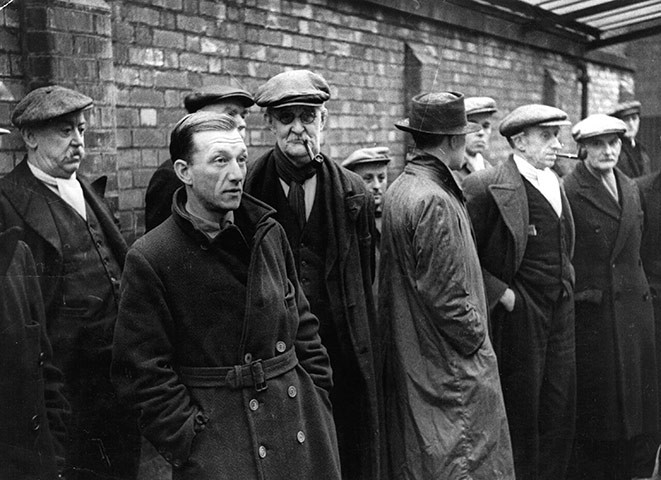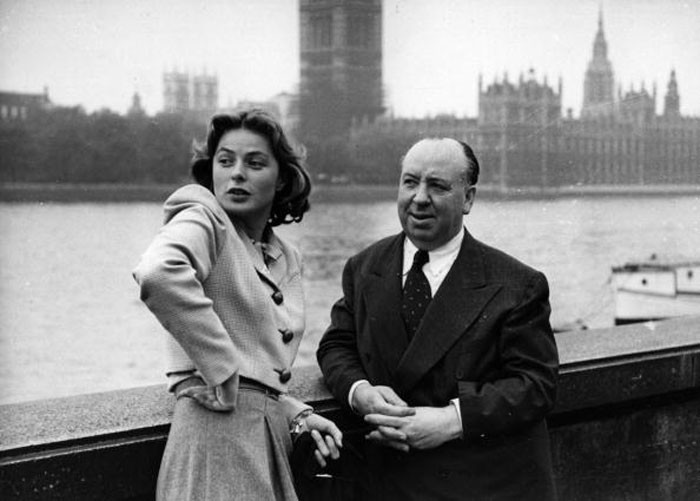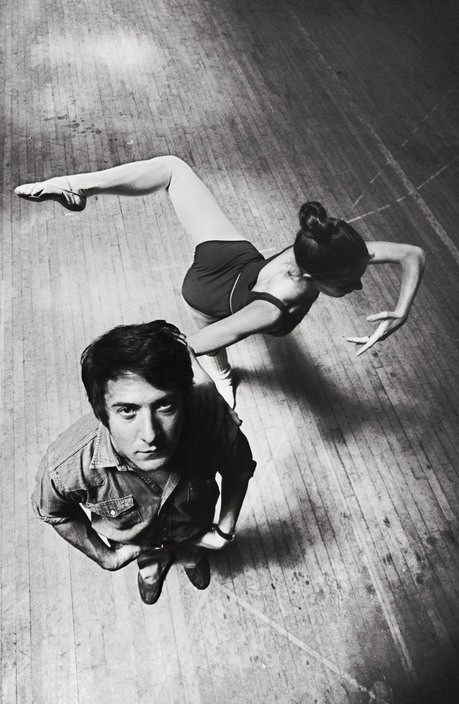Kurt Hutton and Ara Güler – attempting a comparison
Kurt Hutton and Ara Güler – attempting a comparison
January 23, 2017

Kurt Hutton: men waiting
Knowing that I would be coming to Istanbul, I was drawn to compare Ara and Kurt. When comparing them, the film title: “Same, same but different”, came to my mind. I will mainly focus on their photographs, but even before we look at their images, there are already parallels.
Kurt was born nearly 30 years before Ara and Kurt died relatively young in 1960, aged only 67, but both had that outsiders eye. Kurt was from German decent, living and working in London. Ara was born in Istanbul (in 1928) to ethnic Armenian parents. Both came from relatively affluent backgrounds, but had a keen and sympathetic interest in the working class, and the hardships of everyday survival. Despite the age difference, both found their style and creative outlet in photojournalism. Kurt is one of the unsung heroes and a pioneer or photojournalism. By the time Ara got into photojournalism the golden age of photojournalism had arrived. The illustrated magazines had grown up and began to reach across national boundaries. In 1958, the American publisher Time–Life opened a branch in Turkey, and Ara became its first correspondent for the Near East. Soon, he received commissions from other international media outlets, such as Paris Match, Stern and Sunday Times.
Despite the 30 years that separate the two photographers, they had many things in common: Both worked as photojournalists and they predominantly used Leica equipment. Both also clearly had in interest in people and were fuelled by a humanist outlook on life. In their work we see many images of the working-class, but they also photographed celebrities, artist and politicians. What unites them is the humanism and their care for the individual. Ara is quoted as saying: “When I'm taking a picture of Aya Sofia, what counts is the person passing by who stands for life.” This quote could be from Kurt, who once said: “If a photographer is not interested in people he might as well photograph the waxworks of Madame Tussaud’s”.
Nevertheless, when comparing the their images, I get the sense that Ara is harsher in his celebrity portraits and much kinder with the “ordinary” people he encounters. But, in both their work, it is rare to find an image without a human interest. Despite all these parallels there are fascinating differences in their compositions, their use of light as well as black. To me Ara’s photos are darker, not only in their exposure, but also in the way he chooses to photograph what he finds. I see less humour and a harsher realism. In his portraits, Ara tends to go much closer to his subjects, often filling a whole frame with the face. Ara is more experimental with his angles, there is a confidence in his personal vision, that to me, is closer to a later generation of photographers.
Kurt, at the other hand, is more of a storyteller, he is also more concerned with balance, he mostly avoids total black and his grayscale is more evenly spread across the image as a whole. For Kurt the narrative was important. He did not shy away from interfering with what was in front of his lens in order to enhance the story he wanted to convey. By the time Ara was in full swing, the ethos of “street-photography” had taken a firm hold and the commitment to photographing the world as one found it was not negotiable anymore. I feel that Kurt is like a bridge from the late 19th century studio photography to the unadulterated “decisive moment” approach, made immortal by Henri Cartier-Bresson. Kurt, with his left hand, holds the hands of earlier photographers, who were used to arranging a scene and had only just began to leave the studio; his right hand stretches out into the future; the future of Ara’s generation and their photography in the spirit of the decisive moment. Neither of them saw themselves as artists.
Kurt was active at a time where photography had not yet found its way into the art galleries. I think the thought of being and artist never even occurred to Kurt. Ara however, even so that it was not his objective, has lived into a time, where the moments captured by these pioneers of photojournalism, are taking on the aura of archetypes. Today, and rightly so, they have left behind the sheets of the illustrated papers and are seen as works of art. Works of art born from a personal vision and realised through the subtle and intuitive use of their Leica equipment. Photographers, like Ara and Kurt, pushed the potential of the three variables: Aperture, shutter speed and focal point to a balanced harmony that reaches across time and speaks to us today. Yes, there is an element of nostalgia, but its more than that; these images bear witness to moments past, but they also contain the timeless essence of humanism and individual creativity.
Ernst Schlogelhofer
Kurt was born nearly 30 years before Ara and Kurt died relatively young in 1960, aged only 67, but both had that outsiders eye. Kurt was from German decent, living and working in London. Ara was born in Istanbul (in 1928) to ethnic Armenian parents. Both came from relatively affluent backgrounds, but had a keen and sympathetic interest in the working class, and the hardships of everyday survival. Despite the age difference, both found their style and creative outlet in photojournalism. Kurt is one of the unsung heroes and a pioneer or photojournalism. By the time Ara got into photojournalism the golden age of photojournalism had arrived. The illustrated magazines had grown up and began to reach across national boundaries. In 1958, the American publisher Time–Life opened a branch in Turkey, and Ara became its first correspondent for the Near East. Soon, he received commissions from other international media outlets, such as Paris Match, Stern and Sunday Times.
Despite the 30 years that separate the two photographers, they had many things in common: Both worked as photojournalists and they predominantly used Leica equipment. Both also clearly had in interest in people and were fuelled by a humanist outlook on life. In their work we see many images of the working-class, but they also photographed celebrities, artist and politicians. What unites them is the humanism and their care for the individual. Ara is quoted as saying: “When I'm taking a picture of Aya Sofia, what counts is the person passing by who stands for life.” This quote could be from Kurt, who once said: “If a photographer is not interested in people he might as well photograph the waxworks of Madame Tussaud’s”.
Nevertheless, when comparing the their images, I get the sense that Ara is harsher in his celebrity portraits and much kinder with the “ordinary” people he encounters. But, in both their work, it is rare to find an image without a human interest. Despite all these parallels there are fascinating differences in their compositions, their use of light as well as black. To me Ara’s photos are darker, not only in their exposure, but also in the way he chooses to photograph what he finds. I see less humour and a harsher realism. In his portraits, Ara tends to go much closer to his subjects, often filling a whole frame with the face. Ara is more experimental with his angles, there is a confidence in his personal vision, that to me, is closer to a later generation of photographers.
Kurt, at the other hand, is more of a storyteller, he is also more concerned with balance, he mostly avoids total black and his grayscale is more evenly spread across the image as a whole. For Kurt the narrative was important. He did not shy away from interfering with what was in front of his lens in order to enhance the story he wanted to convey. By the time Ara was in full swing, the ethos of “street-photography” had taken a firm hold and the commitment to photographing the world as one found it was not negotiable anymore. I feel that Kurt is like a bridge from the late 19th century studio photography to the unadulterated “decisive moment” approach, made immortal by Henri Cartier-Bresson. Kurt, with his left hand, holds the hands of earlier photographers, who were used to arranging a scene and had only just began to leave the studio; his right hand stretches out into the future; the future of Ara’s generation and their photography in the spirit of the decisive moment. Neither of them saw themselves as artists.
Kurt was active at a time where photography had not yet found its way into the art galleries. I think the thought of being and artist never even occurred to Kurt. Ara however, even so that it was not his objective, has lived into a time, where the moments captured by these pioneers of photojournalism, are taking on the aura of archetypes. Today, and rightly so, they have left behind the sheets of the illustrated papers and are seen as works of art. Works of art born from a personal vision and realised through the subtle and intuitive use of their Leica equipment. Photographers, like Ara and Kurt, pushed the potential of the three variables: Aperture, shutter speed and focal point to a balanced harmony that reaches across time and speaks to us today. Yes, there is an element of nostalgia, but its more than that; these images bear witness to moments past, but they also contain the timeless essence of humanism and individual creativity.
Ernst Schlogelhofer

Kurt Hutton: men waiting

Ara Güler: men

Kurt Hutton: Ingrid Bergman and Alfred Hitchcock

Ara Güler: Dustin Hoffman